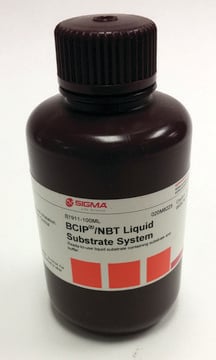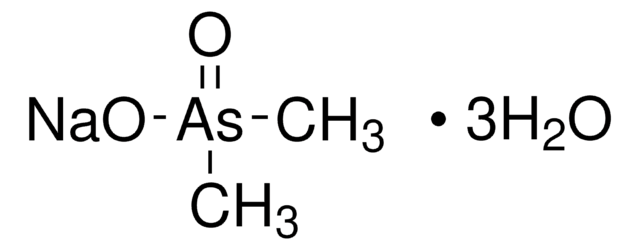S4324
Seppro® Stripping Buffer
Synonym(s):
glycine-based buffer
Sign Into View Organizational & Contract Pricing
All Photos(1)
About This Item
UNSPSC Code:
41106500
NACRES:
NA.32
Recommended Products
storage temp.
2-8°C
Quality Level
General description
Seppro® stripping buffer is a glycine-based buffer (pH 2.25-2.45) recommended for use with Seppro® reagents and columns.
Application
Seppro® Stripping Buffer has been used:
- for IgY14 and SuperMix depletion of human plasma
- immunoglobulin Y (IgY) immunodepletion of top abundant plasma proteins
- to strip the blots for western blotting
Legal Information
Seppro is a registered trademark of Merck KGaA, Darmstadt, Germany
Storage Class Code
12 - Non Combustible Liquids
WGK
WGK 1
Flash Point(F)
Not applicable
Flash Point(C)
Not applicable
Certificates of Analysis (COA)
Search for Certificates of Analysis (COA) by entering the products Lot/Batch Number. Lot and Batch Numbers can be found on a product’s label following the words ‘Lot’ or ‘Batch’.
Already Own This Product?
Find documentation for the products that you have recently purchased in the Document Library.
Simon Sheng et al.
Methods in molecular biology (Clifton, N.J.), 728, 29-46 (2011-04-07)
Serum- and plasma-based biomarker discovery requires technologies with specific capabilities: sufficient proteome coverage and depth, technical reproducibly, and the scalability to enable analysis on a large number of samples at reasonable cost. We have shown that plasma samples processed using
Hasmik Keshishian et al.
Nature protocols, 12(8), 1683-1701 (2017-07-28)
Proteomic characterization of blood plasma is of central importance to clinical proteomics and particularly to biomarker discovery studies. The vast dynamic range and high complexity of the plasma proteome have, however, proven to be serious challenges and have often led
Anahid Ehteda et al.
BMC cancer, 13, 86-86 (2013-02-26)
Albendazole (ABZ) is a microtubule-targeting anthelmintic with a remarkable activity against a variety of human cancer cells. In this study, we examined if the antitumor activity of ABZ could be enhanced by its combination with other microtubule-binding agents. The interactions
Our team of scientists has experience in all areas of research including Life Science, Material Science, Chemical Synthesis, Chromatography, Analytical and many others.
Contact Technical Service








